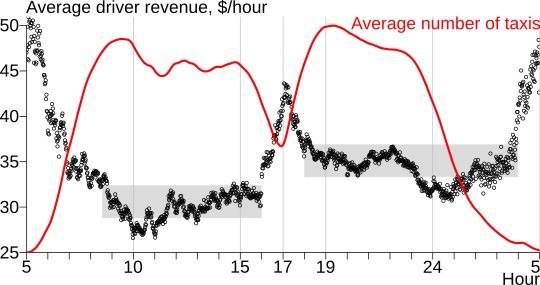Abstract
Understanding driver behavior helps design better transportation systems. This paper presents a game-theoretic model of driver search strategy and learning dynamics, and validates it with massive GPS trajectory data. Among empirical studies of driver strategy in on-demand mobility services, our work examines the longest period and the most trips.
We capture driver search strategies in a multi-market oligopoly model, which has a unique Nash equilibrium and is globally asymptotically stable. The equilibrium can therefore be obtained via heuristic learning rules where drivers pursue the incentive gradient or simply imitate others. To help understand city-scale phenomena, we offer a macroscopic view with the laws of thermodynamics. With 870 million trips of over 50k drivers in New York City, we show that the equilibrium well explains the spatiotemporal patterns of driver search behavior. We find that new drivers learn the equilibrium within a year, and those who stay longer learn better.
